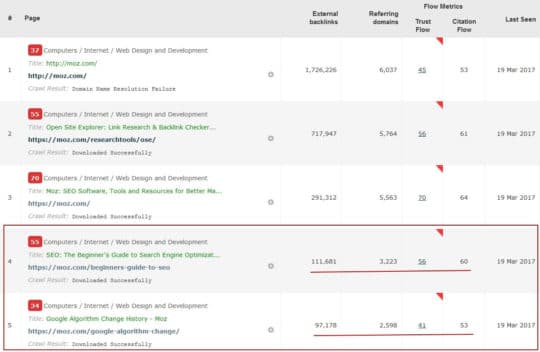From the early days of SEO, content has played a vital role in driving traffic, increasing SERPs, attracting backlinks, and converting visitors into customers. But, though SEO specialists have always realized the importance of “content generation,” they didn’t always emphasize content quality. At least, this was the case before Google’s Penguin and Panda updates.
Times have changed, though. Google has become much smarter and is no longer satisfied with spammy, link-stuffed content. The search giant is all about providing value to their users. By value, I mean high-quality content that is useful, engaging, and user-friendly.
And yet, though the content is definitely king, you shouldn’t underestimate the importance of search engine optimization. Technical SEO, as well as On-page and Off-page optimization, have a huge influence on usability (UI/UX factors like design, mobile optimization, page load speed, text readability, etc.) and rankings. The belief that content marketing has set digital marketers free from doing SEO is false. SEO and content marketing go hand in hand, but don’t replace each other — and never will.
The bottom line is:
In this article, I’m going to explain how to do this and let you in on several on-page SEO tips that will help you bring your content up to snuff.

Create Content that Matters
It all begins with content. If your content is not sufficient, even the best SEO professionals cannot help your site receive a high-ranking position on Google.
Cool design, impeccable usability, high-quality links, and lots of deliberate social sharing may still make a difference; but, if your content is no good, you will end up with a high bounce rate and low average time on your pages, which signals to Google that your site provides poor value.
Topical Trust Flow and the number of external backlinks is a strong indicator of content quality as well. Let’s just have a look at the top 3 topics for SEJ and MOZ blog, consequently:
SEJ
MOZ
The examples above demonstrate pretty well that, though SEJ is highly SEO-focused, users tend to view MOZ content as more trustworthy as it generates way more backlinks and is more powerful in the related niches.
I’m not going to get deeper into details here. After all, this article is about SEO. I strongly recommend, though, that you remember one thing: Google knows when your content is bad. It looks at the engagement metrics and immediately sees the big picture. So, instead of trying to trick Google, focus on creating content that really matters and is worthy enough to generate tons of backlinks.
Optimize Keywords, Tags, and Descriptions
When you are done writing and editing your content, don’t post it right away. Your job is to help search bots scan and index content using appropriately selected keywords, elegantly placed tags, and a crafty meta description.
Most digital marketers start their content creation process with keyword research, but I don’t recommend going that route. While I’m not against having a look at keywords, don’t focus too much attention on them. Keywords kill creativity and prevent content creators from providing actual value to their readers. All they think about is keywords, and that’s it.

Today, content is more important than keywords. It is a fact. No matter how great your keywords are, if your content lacks quality, Google will dismiss it. Meanwhile, great content that is useful and engaging has a higher chance to rank high without having one single keyword in it.
Anyway, don’t be obsessed with keywords (especially exact-match ones) because context, user intent, and engagement rule the day.
If you truly want to generate value and trump your competitors in the process, research their content as a whole, not only their keywords. For instance, if you view MOZ as your competitor, simply research its top-performing pages using “Pages” section in the Majestic SEO tool, like this:
Here we have at least two content-focused pages that perform amazingly well. Figure out what makes them so attractive to audiences interested in SEO. Do your homework and then create and optimize, say, “SEO Guide for Beginners” that is much better than an MOZ’s version.
As to the content optimization, checking if your content features the following elements is more than enough:
- A main targeted keyword in the headline, URL, and content body
- Several long-tail keywords
- LSI keywords
- Optimized tags: Title, H1-H6, Alt
- A meta description with your main keyword and its LSI synonym
Use Visual and Social Elements
I will never grow tired of repeating this: Engagement rates impact organic rankings.
CTR, bounce and exit rates, and time on page metrics are keys that Google uses to evaluate how engaging a site is to users. If its engagement leaves much to be desired, that site will never receive a high organic ranking.

The question is, then, how do you improve engagement to boost organic rankings?
“Create high-quality content” can very likely be the answer. Yet, great content is not merely about the text. Imagery also matters as it allows users to grasp the text’s meaning and value quickly.
Let’s name visual elements you should incorporate into your content:
- A catchy headline
- A visually-appealing featured image
- In-text images
- Subheadings
- Bulleted lists
- Short paragraphs and sentences
- White space
- Videos
- Infographics
- Quotations
- GIFs
Social elements like share buttons and the comments section influence engagement rates positively as well. They:
- Demonstrate users’ interest in your content to Google
- Allow visitors to share content for further reading
- Enable feedback on social media and in the comments’ section
- Show users that you care
Visual and social elements help users engage with content easily (skim, like, share, and comment), which demonstrates to search engines that it is valuable. Engaging content also generates backlinks from reliable resources, signaling to Google that it is worthy of the top SERP.
Prove Your Point with Links
SEO specialists are aware of how important one single high-quality backlink can be to a site’s SERPs. However, as a digital marketer, you shouldn’t be obsessed with producing and optimizing content only for their sake. Prioritize quality and, inevitably, your content will generate lots of backlinks.

Links matter, but it is more important to use them, not attract them. Prove your content’s value by linking to trustworthy resources. It signals to both your customers and Google that your have done your homework and have researched your topic from A to Z. Value is everything to search engines today.
The rest is easy: Place links only to prove your point. Don’t spam and avoid losing link juice to third-party websites (inject “noindex, nofollow” if necessary).
Conclusion
 Long gone are the days when the content was second (or less) to SEO or just a filler to stuff keywords with. Today, content marketing and search engine optimization are inseparable and coexist on equal terms.
Long gone are the days when the content was second (or less) to SEO or just a filler to stuff keywords with. Today, content marketing and search engine optimization are inseparable and coexist on equal terms.
Content producers need SEO professionals to determine website requirements and perform the technical aspects (such as backlinks analysis), while the latter can no longer shoot websites to the top of search results without having to use high-quality articles, infographics, and videos.
Content marketing and SEO complement each other. Utilize the power of these two together, and you will definitely make the most out of each and every piece of content.
This article is written by Sergey Grybniak. He is a founder of a full-cycle digital agency Clever Solution Inc. The agency provides a wide range of digital marketing services such as SEO, SMM and PPC, as well as web design, application and website development. Clever Solution has more than 10 years of experience in successful collaboration with small- and mid-sized businesses from multiple countries. Follow him on LinkedIn.








